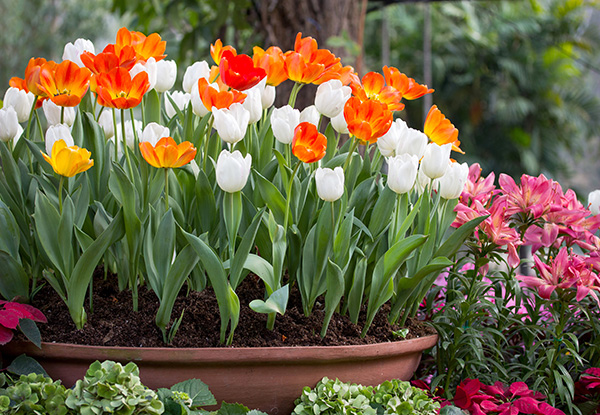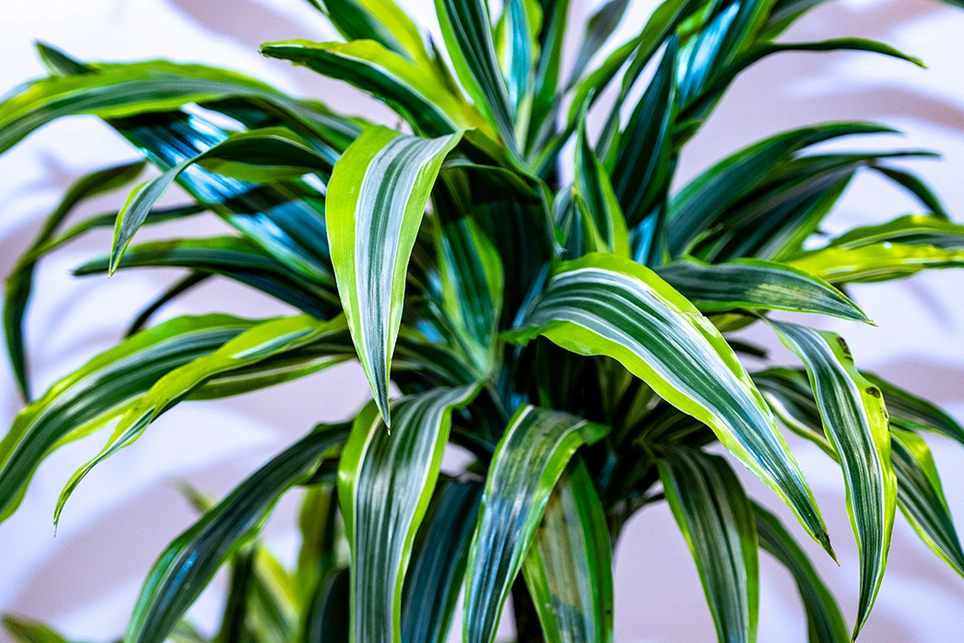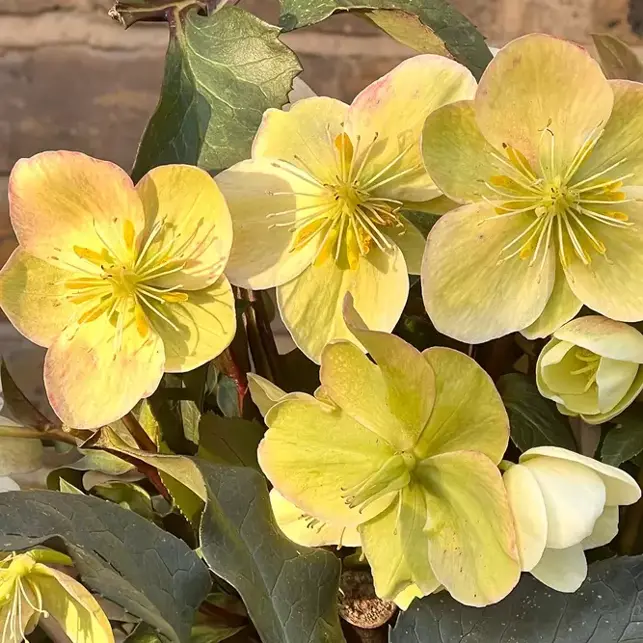
October in North London means accepting the inevitable – shorter days, overcast skies, and that particular grey light that makes even the prettiest Victorian bay window feel a bit gloomy by 4pm. But in certain homes with converted lofts, and you'll spot something unexpectedly vibrant: bromeliads, turning average windowsills into tropical statements.
These aren't your typical houseplants that sulk through winter. Bromeliads actually prefer our filtered London light to blazing sun, making them perfect for homes where direct sunlight is more theory than reality. Mansion flats and terraced houses alike, are trending towards these architectural plants, and for good reason.
The London Light Advantage
Here's what’s gone under the radar about North London homes: that "problem” with a north-facing sitting room or the gentle light filtering through those original sash windows is actually bromeliad paradise.
These plants evolved in rainforest canopies, not desert sun. That Victorian parlour with light bouncing off the houses opposite? Perfect. The kitchen extension that never quite gets direct sun? Even better.
Guzmania, with their torch-like red or orange bracts, positively glow in the soft light of a Highgate study. No crispy leaves, no desperate reaching for sun – just steady, architectural presence.
Place one on a console table in your hallway and watch how it catches the autumn light filtering through the fanlight.
Finding the Right Spot Room by Room
The Statement Bathroom
Those renovated Victorian bathrooms with the roll-top tub and plantation shutters aren't just for Sunday supplements – they're bromeliad heaven.
The humidity from daily showers mimics their tropical origins. Try Vriesea (the flaming sword types) on a window ledge or vintage plant stand. The patterned leaves look particularly smart against metro tiles, and that red sword-like flower spike holds its colour for months, not weeks.
Kitchen Life
In those extended kitchens that every second house from Belsize Park to Muswell Hill seems to have now, Aechmea makes sense.
Tough enough to handle temperature fluctuations from cooking, interesting enough to hold their own against all that glass and steel. The silver-leafed varieties work brilliantly with the grey-green cabinets everyone's chosen. Stick one in a simple ceramic planter on the island – architectural without trying too hard.
The Forgotten Spaces
That awkward corner in the hallway where nothing seems to work?! Neoregelia, with their flat rosettes of colourful leaves, sit happily on a hall table catching whatever light drifts in. They're particularly good in those narrow hallways where everything else feels too tall or too needy.
For ground-floor flats with limited light, Cryptanthus (earth stars) sprawl contentedly in shallow bowls on coffee tables. They're the houseplant equivalent of a good Persian rug – adding pattern and interest without demanding attention.
The Conservatory Question
If you're lucky enough to have a proper conservatory – not just a lean-to but one of those Victorian jobs you see behind the grander houses near Parliament Hill – you can go large.
A mature Ananas (ornamental pineapple) in a substantial planter makes the kind of statement that gets featured in those "At Home With" articles. Just remember; even conservatories in London rarely get scorching sun in October. Position bromeliads away from the glass where temperature swings are less dramatic.
Styling Without Overthinking
Forget those tragic plastic pots they arrive in. Bromeliads deserve better, and their architectural forms mean the container matters. For period properties, aged terracotta or simple glazed ceramics let the plant remain the star. In modern spaces, concrete or matt black planters create proper impact.
The key is proportion. Guzmania's tall bracts need a pot with weight at the base. Cryptanthus, spreading low, looks best in shallow bowls – think more bonsai dish than traditional pot. Air plants (Tillandsia) don't even need soil – mount them on driftwood or nestle them in glass globes for those open shelving units everyone installed during lockdown.
Group them if you've got space. Three different bromeliads at varying heights on a sideboard creates a proper display. Or go minimal with a single, perfect specimen – one orange Guzmania against a dark wall in a Gospel Oak flat makes more impact than a dozen apologetic spider plants.
The Care Reality Check
The truth that often is left unspoken– bromeliads are genuinely low-maintenance, once you understand them. That central cup formed by the leaves?! Keep it topped up with water. In London's lime-heavy tap water areas, use filtered or rainwater if you can be bothered, but honestly, most cope fine with Thames Water's finest.
The soil should be barely moist – think of it as ballast rather than food source. Overwatering kills more bromeliads than neglect ever could. That forgetful approach that murders ferns actually suits bromeliads perfectly.
October through March, they barely need feeding. A weak liquid feed monthly at most. The dry air from central heating that destroys your peace lily? Bromeliads shrug it off, though they appreciate an occasional mist if you remember.
Why Now Makes Sense
October feels counterintuitive for buying tropical plants, but it's actually ideal. As natural light decreases and we spend more time indoors, these plants come into their own. While your summer bedding plants are giving up outside, bromeliads are just getting started with their months-long display.
At Boma, we've noticed more customers discovering bromeliads aren't the divas they assumed. We're stocking architectural Aechmea for those wanting something bulletproof, vibrant Guzmania for instant colour, and increasingly popular air plants for those tiny flats where every surface counts.
The Unexpected Benefits
Beyond the obvious visual impact, bromeliads offer what October in London desperately needs: colour that doesn't depend on flowers. Those red bracts on Guzmania still be red in February. The patterned leaves of Vriesea look good year-round, not just for a few weeks.
They're also conversation starters. Nobody asks about your spider plant, but a proper bromeliad gets noticed. That pineapple growing in your kitchen just off Upper Street? Definitely a talking point when people come round.
Making It Happen
Start with one good specimen rather than several mediocre ones. A single, well-placed Vriesea in your living room makes more impact than a windowsill of struggling succulents. Visit us mid-week when it's quieter and we can talk through what'll actually work in your specific light conditions.
We've got bromeliads potted up and ready to go – no faffing with repotting on your kitchen table. From compact Cryptanthus for studio flats to statement Aechmea for those lucky enough to have proper space, October's stock is particularly good.
Because let's face it, London winters are long enough without staring at empty corners and lifeless windowsills. A few well-chosen bromeliads won't transform your life, but they'll definitely make those dark afternoons feel less relentless. And in October, that's reason enough.
If you’re looking for expert guidance or simply wish to explore beautiful plants, we warmly invite you to visit Boma in Kentish Town. Our passionate and knowledgeable team will help you select the ideal bromeliads—or any other variety—to suit your space, style, and lighting conditions.







